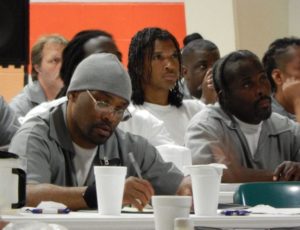
I’ll always remember his words: “I know that every week I have 9 bullets to fire. So, the week before, I get them all lined up.”
Sounds like Samuel Jackson in an action movie, or someone worse, right? Thankfully, quite the opposite. These words were spoken to me by an extremely successful leader in the finance industry. For several years his small division had outpaced the rest of the country by large margins, and his Wall St. firm asked me to go figure out the “magic sauce” of his leadership.
We sat down to our meeting and I began with asking him a simple question. “So, tell me how you do it? Where do these results come from?” And that was his first line.
“And that means what?” I queried.
“Well, as a leader, I have to keep my talent engaged, motivated, focused and happy. Each Thursday, I look at all of them and ask myself, “who needs what? Who needs a little coaching? Who needs a little ‘pick-me-up?’ Who needs a little correction? Etc. And then I line up my ‘bullets.’
“Bullets?” I asked again.
“I have nine bullets to fire each week: 3 breakfast’s, 5 lunches, and 1 dinner. So, I figure out who needs what at that particular time, and I line those up the week before. Then I meet with them 1-1 in that casual setting and give them what they need. It is key to what I do.”
While in the course of our time together over the next months he shared several other practices that went into producing his record setting revenues, this one really impressed me. He was getting structured, and adaptive, at the same time in making sure his key people were getting from him what they needed. Beyond the morning standup meeting and other points of leadership injection, these “bullets” were key and what I refer to with leaders as a KEY leadership people skill: Dosage.
I hear leaders talk all the time about the need to develop, coach, guide their people and doing many activities to that end. But one missing ingredient in their thinking is often the “dosage” schedule that is needed and adding a structure to that. The reason is this: input has a “half-life,” like a medicine. In other words, like a medicine, if you take another one too quickly, the first one has not had adequate time to be metabolized, and you might overwhelm the system. You “overdose” them with too much input. But, as is more often the case, if you wait too long, the first one has totally lost its effect and you are virtually starting over. Nothing has been learned or changed. We need repetition to develop new patterns.
So, one of the reasons he was so good at leading his people to high performance was he was constantly figuring out the “dosage” of input that they needed. He would plan some of them on a schedule, and others he would just know from watching results and performance that they “needed a little more,” and he would use his “bullets” to make sure that happened.
In my experience, depending on the season and what is going on, the stage of development that a person is in, the amount of input that is needed in each “dose,” the amount of time and kind of experiences that need to occur between doses to make sure they have had time to “use” what you gave them last time, are all factors. They are different for different people and different situations. What is important is that you are monitoring it and figuring out this important people skill.
I do the same thing in my consulting. There are some clients that I need to make sure are getting input from me on one schedule, and others that are quite different. Some might be monthly, some quarterly. Others require a check in phone call here and there in between. Reasons vary from who they are, how they metabolize input, what season they are in, what they are dealing with, and also have they had time and opportunity to use and learn from what we discussed last time?
But just like medicine, engaging and leading your people has a proper dosage schedule. You take a certain antibiotic 3 x a day. Why? Because the morning dose has been properly used and metabolized AND is wearing off by noon. To keep the cure, or growth, happening, you MUST come in with another dose right before it wears off to ensure the path is continuing. Otherwise, you are starting over. Not too much that not enough time has passed, but not too little to build on the previous dose either.
Think about your people and your input to them. Figure out the dosage schedule and implement it. Adapt it at times like this leader did, as needed. You hear doctors say that as well: “take as needed.” Figure out what your “bullets” are, and then fire them with the right people at the right time. It works!















Recent Comments